WALTER GEORGE PEARCE
1904-1907.
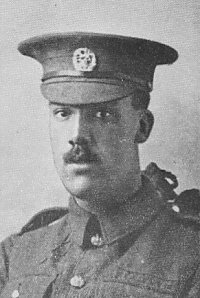
A FEW years after leaving the Secondary School W. G. Pearce was, in October, 1911, appointed a writer in the Naval Store Department of H.M. Dockyard, Portsmouth.
This office he relinquished in June, 1916, to enlist voluntarily in the 1st Batt. Hampshire Regiment. After a short period of home training he crossed to France in the October following. His wearing of the cross guns for Lewis gunnery showed that he rapidly acquired skill in the management of these weapons. Following a period in the trenches he was for a time in hospital, and returned to the firing line only a few days before his death.
April, 1917, saw the great and successful attempt of the British to drive back the enemy in front of Arras, and in this effort the Hampshires played a noteworthy part. On the 12th of the month the Battalion made a most successful attack and " D " Company were set to hold some front line trenches in which Private Pearce and two comrades with their Lewis gun occupied a fire-bay. The position was persistently bombarded by the enemy and, a shell bursting near them, the three were killed. Private Pearce was hit near the temple, and death must have followed immediately. That same night he and his two companions were buried side by side near the support trench.
The Company Officer and Q.M. Sergeant both speak well of him, the latter remarking that " he was a fine soldier," and that " his death was much regretted by all his comrades in our company."
[The CWGC website lists WG Pearce (25795), Private, Hampshire Regiment, date of death, 12/04/1917, age unknown, buried in Bailleul Road East Cemetery, St. Laurent-Blangy.]
GEORGE EDWIN HAROLD PARKS
1906-1910.
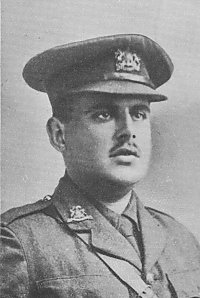
AFTER completing the Fourth Year's Course of the Secondary School and passing both the Oxford Senior Local Examination with First Class Honours and London University Matriculation by direct examination in 1910, he continued his connection with the school until 1912 as a Student Teacher, and passed the Intermediate Science Examination of London University in 1911 as a Student of the Municipal College.
He won the Badge for First Team Football and also the Cap awarded for First Team Cricket, and assisted as violinist in the School Orchestra.
Early in 1913, after a few months' study at St. George's College, London, Mr. Parks obtained a clerkship in the Estate Duty Office and studied Law at King's College for the Intermediate L.L.B.
He was a member of the London University Officers' Training Corps, and obtained the " A Certificate " in August, 1914, just as war broke out. He immediately applied for a commission, and when released from his official duties in 1915, he was gazetted to the Manchester Regiment, and specialised in signalling. All through the memorable month of July, 1916, he served with the 19th Manchesters in the Battle of the Somme and in the costly attacks on Guillemont. In August, 1916, he was wounded in leading a night raid on the German trenches near La Bassee but recovered within three months and went to France again, where he specialised as an Instructor in Bombing, with intervals of service in every part of the front in France and Belgium.
In 1918 he joined the great advance with the 12th Battalion of the Manchester Regiment. It was on October 12th, 1918, that he was mortally wounded whilst leading his men across the River Selle at Neuvilly, near Le Cateau.
He was buried in the Communal Cemetery at Montigny, near Le Cateau.
His Colonel wrote :-" He had shown himself to be a most capable officer and a splendid Instructor, and he died carrying out what he had taught. He did magnificent work, plunging into the river and leading his men over with the very greatest courage and determination. All his men had the utmost confidence in him. We have all lost a very gallant gentleman, a brave and noble comrade."
[The CWGC website lists George Edwin Harold Parks, Lieutenant, Manchester Regiment, date of death, 12/10/1918, aged 24, buried in Montigny Communal Cemetery. Son of Dr. G. J. Parks and Mrs. Parks, of 29, Malvern Rd. Southsea, Portsmouth, husband of Winifred Parks.]
FREDERICK PULMAN
1905-1907.
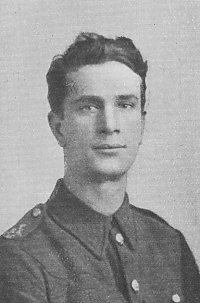
IN 1907 F. Pulman, as a candidate from this School, was successful in passing the examination for Dockyard Apprentices. A month after the declaration of war he enlisted in the Royal Engineers at Portsmouth, serving first in the 1/8th (Hants) Electric Light Company, and then in the 506th (Hants) Field Company. Volunteering for active service he proceeded overseas in October, 1915, with the latter unit, serving successively in France, Egypt, and the Balkans. Tropical sickness overtook him at Salonica in 1916, and the following year he was invalided home in a very weak condition. He never after enjoyed good health and died on the 17th February, 1919, aged 26. He lies buried in Kingston Cemetery.
Mr. Pulman's family also suffered the loss of his youngest brother, Albert, a Dockyard Apprentice, but not an old boy of this school, who was killed in France on 8th August, 1918, when but 19 years old.
[The CWGC website has no record of Frederick Pulman. There is no one by that name buried in a war grave in Kingston Cemetery]
MAURICE TOM RICHARDS
1908-1911.

M.T. RICHARDS was a pupil at the Secondary School for three years and was keen and enthusiastic in football, cricket, and all other kinds of physical activity.
He then entered a private school, and at the outbreak of war joined the Naval Division in training at the Crystal Palace. He afterwards trained in the Machine Gun Course at Grantham and Blandford, and transferred to the 188th M.G.C. and then to the 189th M.G.C. He spent two years on active service in France and rose to the rank of Lieutenant, M.G.C.
He was mortally wounded on September 23rd, 1917, died shortly after at No. 19 Casualty Clearing Station, and was buried in the British Cemetery at Duisans.
Reports from senior officers shew that he was a conscientious, smart officer, popular with his men for whom he showed great care, and very efficient in his gunnery. He was 22 years of age at the time of his death.
[The CWGC website lists Maurice Tom Richards, Lieutenant, Machine Gun Corps, date of death, 23/09/1917, aged 21, buried in Duisans British Cemetery, Etrun. Son of Capt. T. E. and Mrs. C. F. Richards, of 73, Devonshire Avenue, Southsea, Portsmouth.]
REGINALD CHARLES RUNDELL, B.Sc.
1906-1911.

REGINALD C. RUNDELL was a student in the school for five years, obtaining London University Matriculation and covering much of the study required for the Intermediate Science Examination, which he passed as a student of the Municipal College while serving as Student Teacher of the School.
He took an active interest in the social life of the School, and will be particularly remembered by many for the prominent part he played in the musical and dramatic entertainments.
Trained as a Teacher at Reading College, he completed his B.Sc. degree in 1914, and was gazetted as 2nd Lieut. in the 13th Hampshire Regiment in December of that year.
He took up Trench Mortar work and went to France in 1915 as second in command of the l0th Trench Mortar Battery.
During 1916 the Battery experienced much severe fighting from Ypres to the Somme, and was again in the thick of it at the Battle of Arras in April, 1917, when Lieut. Rundell took command and obtained his Captaincy.
He was killed by an exploding shell during the attack on Monchy, near Arras, on May 3rd, 1917.
His brother officers agree in testifying to the love and respect in which Capt. Rundell was held by his comrades. One of them writes :-" He treated all his subordinates fairly and never shirked any dangers or responsibilities. We miss and mourn him as a brother, and we can all truthfully and confidently add that the country can ill afford to lose gallant gentlemen such as he."
[The CWGC website lists Reginald Charles Rundell, Captain, General List, date of death, 03/05/1917, aged 22, buried in Crump Trench British Cemetery, Fampoux. Son of Joseph W. E. and Laura Janet Rundell, of 117, Manners Rd., Southsea. B.Sc.]
HERBERT THOMAS SCARBROUGH
1906-1911.
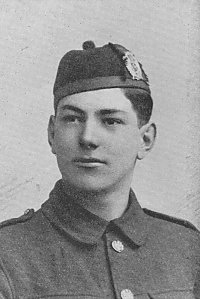
A GOOD scholar and sportsman, he took part in all the various activities of the School. By his pleasing manners and strong character he won the regard of masters and scholars. He matriculated before leaving.
After being a Student Teacher in the town he went to Westminster Training College where he passed the Intermediate Science Examination. A month after leaving College he voluntarily joined the Army in September, 1915. In the following February he was sent with the London Scottish to France and went into action for the first time in April. He was engaged right through the Battle of the Somme and was promoted on the field to Sergeant about July 1916. At Beaulieu Wood, on September 9th, he was in the first line trenches when the rifle shot of a sniper cut short his promising career at the age of 22. His place of burial has not been traced.
His Commanding Officer describes him as a very efficient N.C.O. and as one who was much liked for both his conduct and efficiency.
Thus he exhibited in the Army the same qualities which he had shown in school.
[The CWGC website lists Herbert Thomas Scarbrough (5216), Serjeant, London Regiment (London Scottish), date of death, 09/09/1916, age unknown, remembered on the Thiepval Memorial.]
EDGAR THOMAS SMITH
1909-1913.

AYEAR before the outbreak of war E. T. Smith, in his fourth year at the School, passed the necessary Civil Service Examination to secure an appointment as Boy Clerk.
Upon attaining military age he enlisted in the 1st Battalion Hampshire Regiment and with this Corps he fought on the Western Front during 1917. Then on 4th October of that year, in the vicinity of Poelcapelle, the 11th Machine Gun Company to which he was attached came under a heavy bombardment at about 5.30 in the morning. This was prolonged for twelve hours, but ere two and a half of these were over Pte. Smith was struck in the head by a piece of shell and died immediately.
His comrades buried him the same evening and placed a cross over his grave.
In a letter which the Company Officer wrote announcing the death he says :-" You may rest assured that your son died doing his duty. Your loss is also my loss--he was a bright lad and we all liked him very much. He was always ready and willing to do his duty."
[The CWGC website lists Edgar Thomas Smith (29592), Private, Hampshire Regiment, date of death, 04/10/1917, aged 20, Divisional Collecting Post Cemetery. Son of Edgar Francis and Bessie Smith, of 17, Haslemere Rd., Southsea, Portsmouth.]
SAMUEL ROBERT VICTOR SELF
1902- 1904.
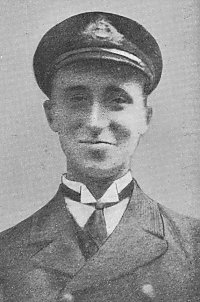
S. R. V. SELF attended the Secondary School in the transition period when it was converted from the Higher Grade School to the Secondary School, and passed into the Royal Navy as a Boy Artificer in 1904. On the training ship, H.M.S. Fisgard, he was awarded the First Prize in the years 1905-06, and in his short and eventful career as Engine Room Artificer rose to commissioned rank as Mate Engineer.
On the outbreak of war he was serving in H.M. Destroyer Firedrake and was present at the Battle of Heligoland Bight. He afterwards served in H.M.S. Neptune, where he was promoted to Mate E. Leaving that ship to join H.M.S. Invincible, he met his death when this vessel was sunk in the Jutland Battle.
Eyewitnesses describe the great enthusiasm aroused by the glorious rush of the Invincible into the battle amidst the cheers of the other battle cruisers. This ship was only half an hour in the fight and then blew up, all but the Commander and five men being killed instantly. The ship went down in ten seconds.
His Commander wrote of him :-" He was a popular officer in the wardroom and an excellent messmate. The Engineer-Commander had also a high appreciation of his professional abilities."
The Chaplain of H.M.S. Neptune wrote :-" Everyone formed a very high opinion of him. We all liked him very much and we all feel that the service has lost a keen and promising officer."
[The CWGC website lists Samuel Robert Victor Self, Mate, HMS Invincible, Royal Navy, date of death, 05/06/1906, aged 26, remembered on the Portsmouth Naval Memorial. Son of Engr. Lieut. Comdr. Lionel Self (Retired), and Mary Elizabeth Self, of 129, Festing Grove, East Southsea.]
ALBERT HENRY SHOTT
1905-1909.
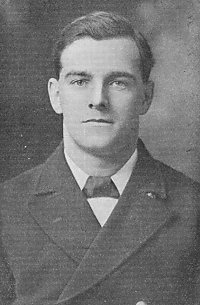
ALBERT H. SHOTT was a pupil of the Secondary School for four years and passed the Civil Service Examination as Naval Boy Artificer in 1909. He was one of the leaders of the School in all kinds of games and manly exercises ; he played in First Team Football and Cricket and captained the winning team (Form IV.) in 1909.
After leaving the school he continued his athletic successes and he won a Football medal on H.M.S. Monarch and played in the team which won the Hants Minor Cup for Football.
During the war he served as Engine Room Artificer on H.M.S. Flirt in the Dover Patrol, and when the ship was sunk with all hands on October 26th, 1916, he lost his life, at the age of 23 years.
[The CWGC website lists Albert Henry Shott (M/1128), ERA 4th Class, HMS Flirt, Royal Navy, date of death, 26/10/1916, aged 23, remembered on the Portsmouth Naval Memorial. Husband of Ivy Jewel Shott, of 32, Alverstone Rd., Milton, Portsmouth.]
FRANCIS WILLIAM SQUIRES
1909-1911.
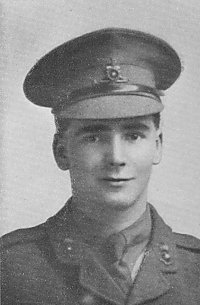
F.W. SQUIRES remained only two years in the Secondary School, during which time he was outstanding in games and sports, winning two cup s as first and second Year Champion respectively, and captaining the team which won the Groves Shield, viz., 1B in 1910 and 2D in 1911.
At the end of the Second Year's Course he passed the Civil Service Examination for Dockyard Apprentices and entered the Dockyard as a Shipwright Apprentice in 1911.
In April, 1915, he passed a competitive examination for entry as a Cadet in the Royal Military Academy, Woolwich, and received a commission in September, 1915, as 2nd Lieut. in the Garrison Artillery.
After passing out first in an Artillery Course at Lydd he joined the 95th Siege Battery and went to France in May, 1916, straight to the Somme sector, where he served as Field Observation Officer in the Battery and as Liaison Officer during the Gommecourt offensive.
He was killed at Guillemont by a shell on November l0th, 1916, at the early age of 20 years 2 months, and was buried about 300 yards north-east of Guillemont Church.
The Major of the 95th Siege Battery wrote of him :-" He always did his duty gallantly and well and was beloved alike by officers and men."
[The CWGC website lists Francis William Squires, 2nd Lieutenant, Royal Garrison Artillery, date of death, 10/11/1916, aged 20, buried in Guillemont Road Cemetery. Native of Portsmouth. Son of Maj. James Squires (R.M.A.) and Mrs. Emma Squires, of "Markham," Fox Corner, Worplesdon, Surrey.]
ALAN DAVIDSON STEED
1906-1911.
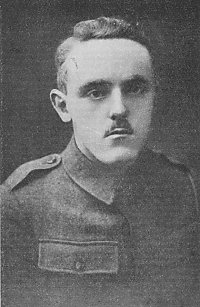
ALAN STEED spent five years at the School, during which time he was prominent in studies and in the social life. As an instance of his dramatic talent, all those attending the school in 1910-11 will remember his excellent rendering of the part of John of Gaunt in Shakespeare's " Richard II." He had already passed the Senior Oxford Local Examination with Second Class Honours when he gained a Scholarship tenable at the Municipal College. At that institution he spent two very successful years, his popularity with his fellow students being shown by their electing him President of the Men Students' Union. In 1913 he gained an Intermediate Civil Service Appointment and took up a post in the Actuarial Branch of the National Health Insurance Department, where, by July, 1914, he had risen to the position of head of his office.
He volunteered for service at the very outbreak of the war, but was not released till late in 1915, when he joined the Inns of Court O.T.C., passing from it to the London Regiment. During his training he specialised in the technical aspects of Musketry, and when his Regiment (the Queen's Westminster Rifle Battalion) went overseas he accompanied them as Armourer.
He was in France in 1917 where he took part in the Battle of Arras, but his division soon received orders to proceed to Salonica. From there they went to Egypt and thence to Palestine. He took part in the capture of Jerusalem and entered the city with General Allenby. A few weeks later, on the 30th April, 1918, his Regiment was fighting the retreating Turks in the Jordan Valley when he was killed by a Turkish shell. He was buried in a little cemetery among the hills beyond Jordan.
[The CWGC website lists Alan Davidson Steed (554398), Rifleman, London Regiment (Queen's Westminster Rifles), date of death, 30/04/1918, aged 23, remembered on the Jerusalem Memorial. Son of Alfred and Edith Steed, of 28, Polwarth Gardens, Hyndland, Glasgow.]
ALFRED PERCIVAL STILWELL
1895-1896.
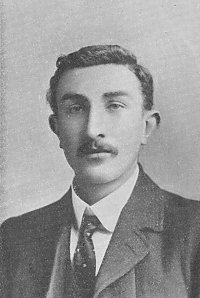
A.P. STILWELL was probably the oldest of the past pupils of the School to perish in the war. Leaving in 1896, he served his apprenticeship as a pupil teacher at Bramble Road School, and obtained the Teacher's Certificate in the summer of 1903 after two years' residence at St. John's Training College, Battersea. From that time till he joined the Army Ordnance Corps in 1915 he held appointments in turn in the Milton, Penhale Road, and New Road Elementary Schools.
At Woolwich Barracks, to which he was sent soon after enlistment, he worked through a special course of instruction in the filling of bombs and, passing the final test satisfactorily, went out to France as a Lance-Corporal early in 1916. In the battle area, from which he was never fortunate enough to get leave of absence allowing of a return home, he worked near the firing line, chiefly with the ammunition. He was killed on the night of 2nd July, 1917, during a raid on the British Camp, by a bomb dropped from enemy aircraft, and was buried in the cemetery at Aire, near St. Omer.
Several letters were written by Officers and men with whom he served, and each one spoke of him as a man of high character and as a most conscientious and industrious soldier. A point was made in these letters of his great willingness to help his fellow men both at work and during leisure hours.
[The CWGC website lists Alfred Percival Stilwell (O/3167), Lance Corporal, Royal Army Ordnance Corps, date of death, 02/07/1917, aged 36, buried in the Aire Communal Cemetery. Son of Benjamin and Mary Stilwell, of Portsmouth.]
CHARLES LEONARD STOKES
1907-1912.
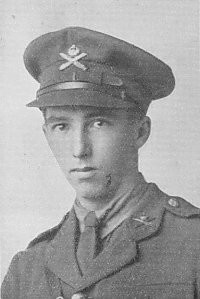
C.L. STOKES received the full school course and passed the Oxford Senior Local Examination in 1911. He joined in the social life of the school, and the successful part he played in school entertainments will be remembered by his schoolfellows of that period.
After leaving school he entered the service of the Northern Assurance Company at the Portsmouth Branch in September, 1912, as Junior Clerk. Prior to the outbreak of war he was in the Territorial Forces, and was called up as a Gunner in the Hampshire Royal Garrison Artillery on mobilsation, August 5th, 1914, and stationed at Southsea Castle. In April, 1915, he contracted measles and developed pneumonia and pleurisy, and in consequence was in hospital and at a convalescent home for over five months. Shortly after rejoining he was granted a commission and was gazetted on 26th October to the 2/6th Hampshire Regiment and, after training at Bournemouth, was transferred to the Machine Gun Corps at Grantham, where he completed his training, and was sent out to France on 16th June, 1916. He was wounded in action on 19th July and sent home to recuperate. He returned to France in April, 1917, and was in action at the capture of Bullecourt and several other important towns. He was promoted full Lieutenant on 18th June, 1917, and after ten days' leave in August rejoined his regiment, and was killed in action on 26th September, 1917. He was buried on the field of battle between " Inverness Cape " and " Stirling Castle " Wood.
The Captain of the 19th Company Machine Gun Corps wrote of him :-" He was gallantly encouraging his men during the attack when a splinter struck him, killing him instantaneously. He was an extremely capable officer and very popular with officers and men."
[The CWGC website lists Charles Leonard Stokes, Hampshire Regiment, date of death, 26/09/1917, aged 23, remembered on the Tyne Cot Memorial. Son of Charles William and Elizabeth Jackson Stokes, of 32, Nelson Rd., Southsea, Hants.]
EDWIN HERBERT SUMMERS
1904-1906.

AFTER two years in the Secondary School with successes at both the Junior and Senior Examinations of the College of Preceptors, " Bert " Summers left to become a Pupil Teacher in a local school. Thence he went to a Training College and, gaining the Teacher's Certificate, was appointed to the Fratton Boys' School.
He joined the Army as a Private in the 16th Hampshire Battalion, but was soon raised to the rank of Sergeant. Following a course of training at Aldershot he gained further promotion and became qualified as Sergeant-Instructor at the Chisledon Camp. From there he was sent to France with other non-commissioned officers to fill up vacancies in the D Company of the 12th Gloucester Regiment. After six months in France, and immediately following a battle at Fresnoy, three miles over Vimy Ridge, he was reported wounded and missing on 8th May, 1917. Since then no more has been heard and it is " presumed that he was killed in action on that day."
Sergeant Summers, who was 27 years old at the time of his death, had married in 1915 and leaves a little son born the following year. Addressing his widow the Platoon Officer wrote as follows :-" I have been in some tight corners with your husband and always found him brave and cool under fire, and always bright and cheerful and a splendid example to the men under most trying conditions."
[The CWGC website lists Edwin H. Summers (31924), Lance Serjeant, Gloucestershire Regiment, date of death, 08/05/1917, aged 27, remembered on the Arras Memorial. Son of Capt. E. J. Summers and Mrs. M. A. Summers, of 21, Pelham Rd., Southsea, Hants, husband of Edith Summers, of 31, Angerstein Rd., North End, Portsmouth. Educated at St. Luke's College, Exeter. Schoolmaster under Portsmouth Education Committee.]
CLARENCE NORMAN TANNER
1911-1913.

CLARENCE N. TANNER had attended the School only two years when he left to take up a position as Laboratory Attendant at the Municipal College in the Electrical Engineering Department. During his short career at school he showed great promise in studies, and as he had a good voice he was able to give assistance in the school choir. One remembers in particular his remarkably fine critical essay on the character of Shakespeare's Falstaff, which won him warm praise and a prize from the Manager of a Shakespearean Company visiting Portsmouth.'
After serving for two years as Laboratory Attendant and part-time student at the Municipal College he joined the 2nd Portsmouth Battalion (15th Hampshire Regiment) in August, 1915, at the early age of 16 and 1/2 years. Though a mere boy in years, he gained rapid promotion to Lance-Corporal in December, 1915, and Corporal in January, 1916.
Proceeding to France he took part in the great battle of the Somme. He was promoted to Sergeant on the Field, July 24th, 1916, and was mortally wounded on September i5th, 1916, dying two days after at the age of 17 and 1/2 years.
Thus for a year this brave boy worked and fought as a man, winning credit and promotion amongst men, and yielding his life at an age when many boys have not even left school.
He was buried in Dartmoor Cemetery, near Albert, France.
[The CWGC website lists Clarence Norman Tanner (19298), Serjeant, Hampshire Regiment, date of death, 17/09/1916, aged 17, buried in Dartmoor Cemetery, Becordel-Becourt. Son of Charles G. and A. Tanner, of 217, Fawcett Rd., Southsea, Portsmouth.]
ROBERT HENRY TURNER
1910-1913.
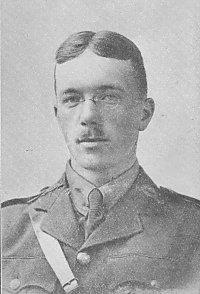
R.H. TURNER passed directly into the Second Year's Course of the Secondary School from the Philological School in 1910, and after entering fully into the life of the school completed the Matriculation Examination of London University in 1913.
He left the School to become a student at the Portsmouth Municipal College, where he obtained the Intermediate Science qualification before war broke out.
He was commissioned and was promoted to the rank of Lieutenant in the Lincoln Regiment, and went to France in 1916.
In 1917 he received a bullet wound in the head but made a perfect recovery and soon returned to the Front.
On March 21st, 1918, he was severely wounded in the side and died on March 23rd, 1918. His Colonel wrote of him :-" He was a very gallant officer and endeared himself to both officers and men by his cheery and kindly manner. He is a great loss to the regiment."
Lieutenant R. H. Turner was not quite 21 years of age at the time of his death.
[The CWGC website lists Robert Henry Turner, Lieutenant, Lincolnshire Regiment, date of death, 23/03/1918, aged 21, buried in the Dernancourt Communal Cemetery. Son of Robert Henry Turner, M.A., Mus. Bac., F.R.C.O., and Elizabeth Adriana Cornelia Turner, of 69, Victoria Rd. North, Southsea, Portsmouth.]
HENRY WALTER VAUGHAN
1903-1904.
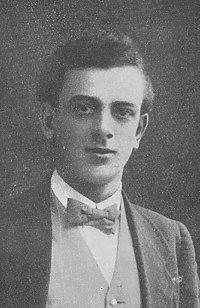
BY examination of the Civil Service Commission H. W. Vaughan passed from this School into H.M. Dockyard as a Shipwright Apprentice. Some ten years later he elected to go for a term to the Dockyard at Gibraltar.
It was while he was returning from there in the United States Ship Tampa, after an absence of three and a half years, that the vessel was torpedoed on the night of 26th September, 1918, in the Bristol Channel. Pieces of wreckage bearing the ship's name were afterwards picked up, but so far as is known there were no survivors of this disaster.
[The CWGC website lists Henry Walter Vaughan), Shipwright, HM Dockyard, Royal Navy, date of death, 26/09/1918, aged 28, remembered on the Portsmouth Naval Memorial. Son of James and Caroline Vaughan, of 43, Herbert St., Landport, Portsmouth.]
BERTRAM EDWARD STEVENTON WAGER
1901-1903.
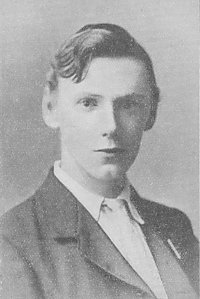
AT the end of his two years at this school B. E. S. Wager became a pupil teacher at the St. Mary's Road School, Portsmouth, and then entered Culham College, Oxfordshire, for a two years' course of training, There he gained the Teacher's Certificate with distinctions in two subiects, and then returning was appointed an Assistant Master in the Portsmouth Town School.
In 1915 he enlisted voluntarily in the 1/1 Home Counties Divisional Cyclist Company, but was later transferred to the City of London Regiment-the 13th Battalion Royal Fusiliers. He was raised to the rank of corporal after serving as a private for a few days only. At the School of Musketry, Bisley, he passed as a 1st Class Instructor, and after reaching the Western Front qualified as Instructor in Lewis Gunnery. Also, for a period of six weeks under an O.C., he conducted a map-reading school for officers. Recommended for a commission, he was just about to proceed to England for the necessary training when he was killed in action a few hours before dawn on the l0th January, 1918. He was laid to rest in the Spoilbank Military Cemetery, Zillebeke, near Ypres, and a few days later a Requiem Mass was held in a neighbouring schoolroom.
The Captain of his Company writes :-" It was a pleasure to command such men as he," and the Chaplain in a letter says :-" I know how he was loved by his many chums and respected by all. I had got to know him quite well and I feel really thankful to have met him. I shall always keep the memory of his friendship as sacred. I feel certain that his example and the beautiful simplicity of his character helped me in my work among these men-in his quiet way he had a wonderful influence over the men."
[The CWGC website lists BES Wager (229707), Private, London Regiment (Royal Fusiliers), date of death, 10/01/1918, age unknown, buried in Spoilbank Cemetery.]
CLARENCE WILFRED WILKINSON
1904-1906.
CW. WILKINSON was one of the pupils of this School who in 1906 passed the examination of the Civil Service Commission and were admitted as Boy Artificers on H.M.S. Fisgard.
His course of training successfully completed, he became an Engine Room Artificer in the Royal Navy. For the war period until the catastrophe of 5th June, 1916, he served on H.M.S. Hampshire. Three days before the great mishap off the wild west coast of the Orkneys this vessel had returned in triumph from the great fight off the Jutland Coast.
Of Mr. Wilkinson, as of Lord Kitchener and the great majority of the ship's company, no more news was ever heard.
[The CWGC website lists Clarence Wilfred Wilkinson (J/43447), ERA 3rd Class, HMS Hampshire, Royal Navy, date of death, 05/06/1916, age unknown, remembered on the Portsmouth Naval Memorial.]
CHARLES FREDERICK HILLIARD WHITE
1904-1906.

IN 1906 C. F. H. White was successful by competitive examination in securing a place on H.M.S. Fisgard as Boy Artificer. After completing his training he served as an Engine Room Artificer on H.M.S. Achilles and later was transferred to H.M.S. Queen Mary. On this ship he took part in the Battle of Heligoland Bight in the first month of the war and with her went into the Battle off the Coast of Jutland on the afternoon of the 31st May, 1916.
Quite early in the conflict, but not before her own superb marksmanship had inflicted great losses on the enemy, this battle cruiser was hit in a vital spot and blew up.
Mr. White was 25 years of age when as one of the ship's crew he perished.
[The CWGC website lists Charles Frederick Hilliard White (272250), ERA 3rd Class, HMS Queen Mary, Royal Navy, date of death, 31/05/1916, aged 25, remembered on the Portsmouth Naval Memorial. Son of Frederick William and Caroline Florence White, of 1, Ravenswood Rd., Croydon, Surrey. Native of Southsea.]
FRANK WINDIBANK
1902-1903.
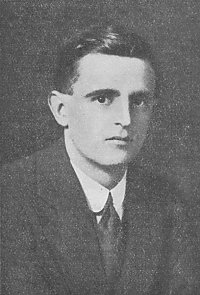
F. WINDIBANK completed his education at the Higher Grade School in 1903 and was apprenticed to Copestake & Crampton, wholesale drapers, where he remained until he enlisted in the A.S.C. in 1915. He transferred to the Berkshire Regiment in 1917 and then to the Machine Gun Corps at Grantham, whence he was drafted to India, November, 1917.
He was stationed at Quetta with the 270th Company, was with them on the Afghan Frontier in 1919, and was promoted to Sergeant.
On November 30th, 1919, Sergeant Windibank embarked at Karachi for home on H.M.S. Soudan, was taken ill with influenza on December 3rd and died on December 16th of pneumonia at the age of 31 years.
He was buried at sea, about 200 miles east of Gibraltar.
[The CWGC website lists Frank Windibank (118372), Serjeant, Machine Gun Corps, date of death, 16/12/1919, aged 31, buried in Hollybrook Cemetery, Southampton. Son of the late Richard and Emily Windibank, of 229, Somers Rd., Southsea, Hants; husband of Dorothea Eleanor Windibank, of 10, Eastgate Square, Chichester.]
FREDERICK HENRY WILLIAMSON
1903-1907.
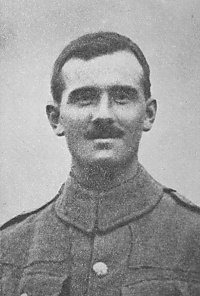
FH. WILLIAMSON attended this school for four years and before leaving had passed first the Junior and then the Senior Examinations of the College of Preceptors.
During his apprenticeship as a Pupil Teacher in a Portsmouth school he succeeded in Matriculating at London University and then entered in 1909 the University College, Reading, for a two years' course of training. Becoming qualified as a Certificated Teacher he was appointed an Assistant Master in the Omega Street Council School, where he was still serving in June, 1915, when he voluntarily joined the Army. He enlisted in the 9th Hampshire Regiment, but was afterwards transferred to the 2nd Hants, in which Battalion he acted as Musketry Instructor with the rank of Sergeant.
Whilst serving on the Western Front he died in the " New Zealand " Hospital on the 9th May, 1918, and was buried at Longueness, near St. Omer.
[The CWGC website lists Frederick Henry Williamson (356105), Lance Serjeant, Hampshire Regiment, date of death, 09/05/1918, aged 27, buried in Longuenesse (St. Omer) Souvenir Cemetery. Son of Henry John and Alice Maud Mary Williamson; husband of Marie Frances Williamson, of "Crofton," 69, Devonshire Avenue, Southsea, Portsmouth.]
WILLIAM THOMAS WILLS
1897- 1899.
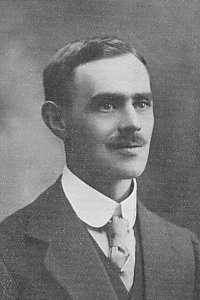
IN 1899, at the end of his second year in the School, W. T. Wills succeeded by Civil Service Examination in securing an Apprenticeship in H.M. Dockyard, Portsmouth.
Some years later he left Admiralty employment and changed to a certain extent the character of his work by accepting an appointment under the Local Education Committee as Manual Instructor at their Drayton Road Centre. To ensure proficiency in his new undertaking he secured a number of certificates, some in mechanical subjects of various kinds from the " City and Guilds," and others in the theory and practice of teaching.
In October, 1914, he enrolled in the newly-formed Portsmouth Volunteer Training Corps, but thirteen months after severed his connection with it to enlist voluntarily in the Royal Army Service Corps. From Avonmouth he crossed to France in May, 1916, and for upwards of a year served on the Western Front with the rank of Sergeant in the Caterpillar Section of the Motor Transport. On the 3rd August, 1917, he was so severely wounded that he died the following day. His comrades buried him in the Brandhoek Cemetery, near the Ypres Road.
From the expressions of appreciation which his widow received, the words of his Company Officer may be selected as representative. They are :-" He was a good and capable Sergeant, always willing, and held in great respect by the whole Company. He has been buried in a Military Cemetery and we are having a plate inscribed to put on his cross in token of our respect."
[The CWGC website lists WT Wills (M2/150327), Serjeant, Army Service Corps, date of death, 04/08/1917, age unknown, buried in Brandhoek New Military Cemetery. Son of W. T. and H. Wills, of Portsmouth; husband of Alice M. Wills, of 10, Preston Rd., North End, Portsmouth. Manual Instructor at Drayton Rd. Council School, Portsmouth.]
Back to the Memorial Main Page
